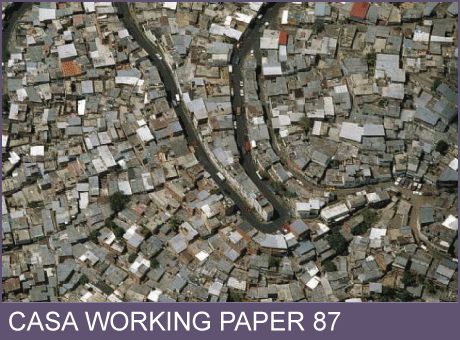CASA Working Paper 87

1 November 2004
Assessing Texture Pattern in Slum Across Scales An Unsupervised Approach
According to the Global Report on Human Settlements (United Nations, 2003), almost 1 billion people (32% of the world's population) live in squatter settlements or slums. Recently, the perception of these settlements has changed, from harmful tumours which would spread around sickly and unhealthy cities, to a new perspective that interpret them as social expressions of more complex urban dynamics. However, considering a report from UNCHS - United Nations Center for Human Settlements, in relation to illegal and disordered urbanisation issue, some of the main challenges faced by cities are related to mapping and registering geographic information and social data spatial analysis.
In this context, we present, in this paper, preliminary results from a study that aims to interpret city from the perspective of urban texture, using for this purpose, high resolution remote sensing images. We have developed analytic experiments of "urban tissue" samples, trying to identify texture patterns which could (or could not) represent distinct levels of urban poverty associated to spatial patterns. Such analysis are based on some complex theory concepts and tools, such as fractal dimension and lacunarity. Preliminary results seems to suggest that the urban tissue is fractal by nature, and from the distinct texture patterns it is possible to relate social pattern to spatial configuration, making possible the development of methodologies and computational tools which could generate, via satellite, alternative and complementary mapping and classifications for urban poverty.
This working paper is available as a PDF. The file size is 2MB.
Authors: Fabiano Sobreira, Mauro Barros Filho
Publication Date: 1/3/2005
 Close
Close

